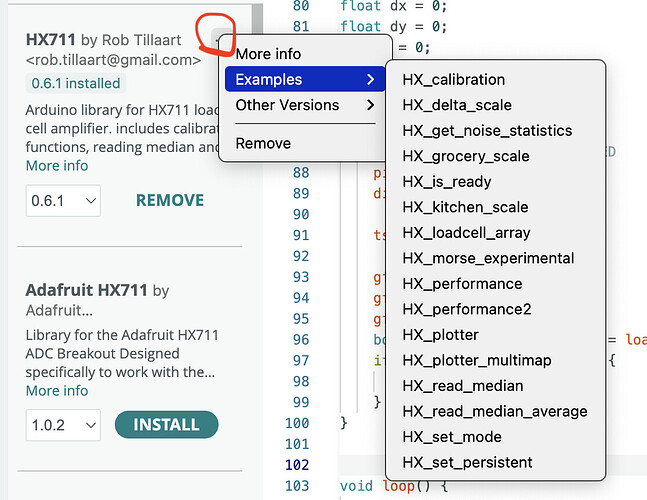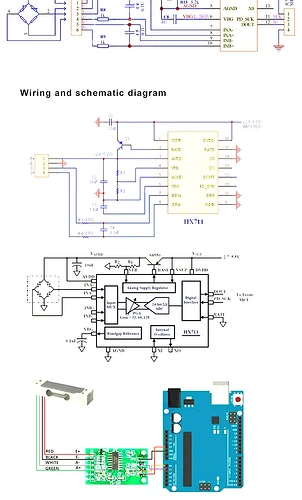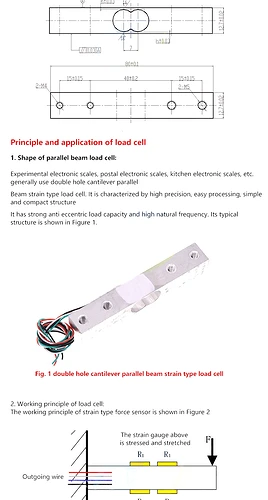Hi everyone,
I'm new to developing my own projects, and I'm currently building a smart cat toilet that uses 4x 4-wire stain gauges (20kg each) hooked up to an hx711, itself connected to an esp32. I'm essentially building this man's project, and following his instructions: https://makerworld.com/en/models/1343408-smartcat-toilet?from=search#profileId-1384441.
The wires are connected in the way he recommended (wires of all load cells of the same color twisted together), and in the way both him and the aliexpress manufacturer state (red e+, black e-, green a+, white a-).
Initially I soldered a 1000µF 50v capacitor to the gnd and vcc of the hx711 - the maker suggested a 100µf capacitor instead, so I did that. Later I removed the capacitor entirely. In all cases, though, my issue is the same:
no matter how much weight I put on the platform, the readings are very stable. Whether it is 0, 3kg, 5kg, 7.5kg, 10kg, or 20kg, the base readings are 3180-90, and these hardly change at all. In all cases -capacitor wise-, I measured the voltage between the vcc and gnd of the hx711, which is roughly 5.1v. Between e- and e+ it is 4.132v. Strangely, between a- and a+ it is roughly 0,7v, though in my idea, it should be roughly a few millivolts as the signal needs to be amplified. I checked whether these wires were separated, and resistance between a- and a+ is 500ohm, which suggests they are.
I asked the original maker of the project, and he suggested me to use a 100µf capacitor rather than a 1000µf, but no matter whether I use a capacitor or not, I don't seem to get any measurement whatsoever. I can see the beams 'bending' a bit, they are hooked up using screws so there is in fact a cantilever process going on. Any Idea what the issue could be? I can share code, pictures, and videos.
Help is greatly appreciated.




